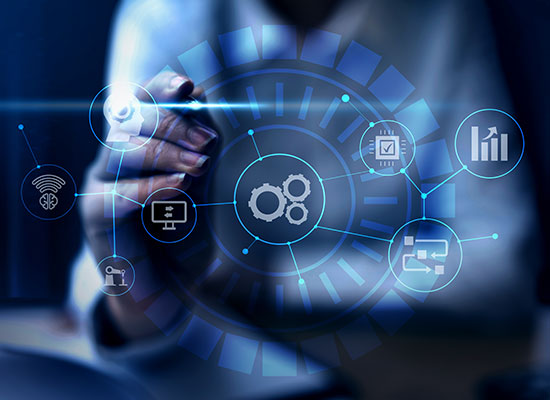
Industries have had a stellar time of growth. The COVID-19 pandemic was an inflection point for major heads to head towards digital transformation.
As the pandemic raged on, industries spearheaded digital transformation initiatives to create moats. Sustainability was the mantra to follow as corporations’ chief technology officers (CTOs) scrambled to attain the right technology mix for the perfect balance.
But with the world undergone an upheaval, awareness of automation technologies had led to its implementation by businesses. Whether the focus is on growth or production quality, software had arrived at the doorsteps of major industries proving to be a necessity.
However, customization has become privy for companies to become brands. Brands need the right technology mix to stay on top of their industry.
Virstack is a software development company based in California with the aim to enhance collaboration between teams and improve processes. Its arsenal of smart software engineers and awareness of the latest technologies relevant in modern times helps companies focus on their business.
8 Trends in Custom Software Development in 2024
Web 3.0
Web 3.0 is the internet based on decentralized technologies. It leverages machine learning (ML) and artificial intelligence (AI) to provide users with updated information.
Containerization
Containerization involves zipping up an application and its assorted libraries to run on multiple computing environments. Software developers can use it to test-run their applications on the cloud and hit production deadlines. Some of the benefits are:
Internet of Things (IoT)
IoT is an automated system containing interconnecting devices that communicate and exchange data with each other. It will help industries in pinpointing any gaps in the system or process.
Low Code Development
Low code development platforms assist users in creating applications with minimal coding, using graphical interfaces and drag-and-drop components.
Augmented Reality (AR)
AR provides assistance in various industries and helps improve the experience of its users. It is useful in industries looking to improve their production cycle runs using manual and digital data.
Artificial Intelligence (AI)
AI is leveraged by machines to mimic humans to provide due assistance.
Progressive Web Apps (PWAs)
PWAs are web applications that help industries bridge the mobile gap by providing a similar experience across all mobile operating systems. Companies can build the application within the browser making buying and selling of services relatively simple.
Cybersecurity
Cybersecurity programs are devised to protect industries cyber threats and malware. As industries evolve, so do their security measures. Here’s how implementation of cybersecurity protects systems from digital threats.
Choose Virstack for Customized Software
Emerging companies have created existing products that simplify tasks. Software integration makes it easier to accumulate data and pinpoint gaps in the process.
Creating a dedicated software development team is essential for business success in the realm of custom software development. This team aligns its objectives with the company’s core business needs, ensuring a cohesive approach to long-term goals and vision. Unlike project-based outsourcing, where teams disband after project completion, a dedicated team remains integrated within the company, maintaining continuity and alignment with evolving business objectives.
A dedicated software development team navigates cultural barriers and effectively gathers requirements for proper planning. It customizes solutions to meet the organization’s unique needs and goals, ensuring that the framework and methodology employed are tailored to enhance quality and customer engagement.
This approach significantly improves productivity and accelerates time to market. Familiarity with the company’s processes and systems minimizes the time needed to initiate new projects and speeds up development cycles. This efficiency is vital for maintaining competitiveness and consistently delivering value to customers.
Virstack, a software outsourcing company in California, exemplifies this approach by providing reliable, fast time-to-market solutions that align with your business needs. Our expertise accelerates the modernization efforts of enterprises, supporting their digital transformation and helping them stay ahead in a rapidly evolving technological landscape.
Contact Virstack today to see how customized software fits your business needs.